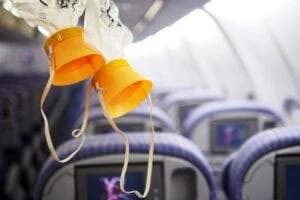
Airplane Accident Lawyer in Phoenix

Air travel offers remarkable efficiency and comfort, yet accidents involving commercial or private aircraft can shatter lives in an instant. Such incidents may lead to extensive hospitalizations, long-term disability, or grievous emotional distress. When you or someone you love suffers harm in a Phoenix airplane accident, identifying who bears responsibility and how best to secure adequate compensation can feel overwhelming.
This service page reviews fundamental aspects of airplane accident claims, potential avenues of recovery, and the role of an aviation-focused lawyer. While these guidelines can serve as a valuable starting point, unique circumstances might warrant more personalized analysis. Consider reaching out directly if you wish to discuss your situation with a qualified professional who concentrates on aviation matters.
The Unique Challenges of Airplane Accident Claims
Aircraft collisions, runway overruns, or mechanical failures often result in severe injuries due to high impact forces and sudden decelerations. These incidents also tend to involve complex investigations, which may require input from multiple parties. Both federal and local regulations influence how such cases unfold in Phoenix, especially if the flight began or ended at an airport under specific oversight.
Key differences distinguishing airplane accidents from standard personal injury claims include:
- Multiple Potential Defendants
- Liability might involve airlines, aircraft manufacturers, maintenance crews, or air traffic controllers.
- Determining if pilot error, equipment flaws, or external hazards caused the crash demands methodical research.
- Rigid Regulatory Environment
- Authorities like the National Transportation Safety Board (NTSB) investigate serious aviation incidents.
- The Federal Aviation Administration (FAA) enforces rules for pilot certification, aircraft maintenance, and flight protocols.
- Highly Technical Evidence
- Flight data recorders, cockpit voice recordings, and aerodynamic analyses often inform liability.
- Collaboration with forensic engineers or aviation experts helps interpret this data effectively.
Given these complexities, families of victims or survivors themselves might struggle to confront airlines or insurance carriers without skilled advocacy. A thorough approach can shed light on hidden details—such as known mechanical issues or management oversights—that contribute to a more transparent resolution.
For a free legal consultation with a Personal Injury lawyer serving Scottsdale, call (844) 343-9609
Common Causes of Aircraft Accidents
While flying is statistically considered safe, human and mechanical errors still lead to tragedies. Aviation attorneys regularly see claims rooted in:
- Pilot Error
- Mistakes in judgment, inadequate situational awareness, or poor navigation under challenging conditions.
- Miscommunication with air traffic control can compound these oversights.
- Mechanical Failures
- Faulty components like engines, landing gear, or hydraulic systems.
- Manufacturing defects or poor maintenance could increase the risk of system breakdowns mid-flight.
- Weather-Related Issues
- Sudden storms, heavy winds, or poor visibility may force unexpected maneuvers.
- Some crashes occur when airlines or pilots inadequately plan for severe weather conditions.
- Air Traffic Control Mistakes
- Errors in scheduling takeoffs, landings, or spacing between flights.
- Communication breakdowns leading to confusion in busy or congested airspace.
- Runway Incursions
- Misinterpretation of ground instructions that cause aircraft to collide or overrun runways.
- Failure to maintain safe distances between departing and incoming planes.
The International Air Transport Association (IATA) highlights ongoing efforts to enhance flight safety through better training, technology, and global standards. Still, lapses happen, and victims deserve recourse when airlines, pilots, or other stakeholders disregard mandated procedures or fail to uphold safety obligations.
Personal Injury Lawyer Near Me (844) 343-9609
Types of Injuries and Their Consequences
Airplane accidents can cause injuries ranging from mild bruises to life-altering trauma. Survivors often face immediate medical crises and potential long-term setbacks. Examples of harm encountered include:
- Traumatic Brain Injuries (TBI)
- Sudden impacts or blunt-force trauma in a collision can disrupt cognitive abilities and motor skills.
- Recovery may involve extensive rehabilitation and therapy.
- Spinal Cord Damage
- High-intensity forces place the back and neck at risk of fractures or nerve compression.
- Partial or full paralysis could require adapted living spaces and lifelong medical support.
- Burns or Smoke Inhalation
- Post-crash fires or cabin smoke can cause severe skin burns or respiratory complications.
- Victims sometimes need multiple reconstructive surgeries or breathing treatments.
- Fractures and Soft Tissue Injuries
- Arms, legs, ribs, and shoulders often bear the brunt of crash impacts or abrupt decelerations.
- Long-term limitations might impede an individual’s capacity to resume their former job or hobbies.
- Psychological Distress
- Surviving a plane crash can trigger post-traumatic stress disorder (PTSD), anxiety, or depression.
- Counseling and ongoing mental health care may be essential to reclaim daily functionality.
Medical bills accumulate quickly when advanced surgeries or specialized services come into play. Seeking legal counsel early ensures that evidence of physical and emotional harm is accurately documented, forming the backbone of a compensation claim.
Click to contact our personal injury lawyers today
Determining Liability and Potential Defendants
Pinpointing who is at fault in an aviation case can be complicated. Multiple parties may share blame. An experienced attorney can review aspects such as:
- Airline Responsibility
- Did the company meet mandated upkeep intervals and properly train its pilots?
- Were flight schedules or rest protocols appropriately followed?
- Pilot Behavior
- Was the pilot adequately certified and rested before the flight?
- Did they breach protocols or commit errors in responding to flight challenges?
- Maintenance Contractors
- Third-party teams handling repairs might skip critical safety checks to save costs.
- Shoddy workmanship can mean essential parts fail unexpectedly.
- Manufacturers or Designers
- Faulty designs in aircraft engines, wings, or flight control systems might not surface until tragedy strikes.
- Past recalls or design changes can hint at known issues.
- Airport Operations
- Air traffic controllers, ground crews, or runway maintenance personnel may fail to coordinate clear instructions or keep the runway safe.
- Overcrowded airports or technical glitches in monitoring systems play a role.
Comparative fault could emerge if multiple defendants contributed to a scenario that led to your injuries or your loved one’s passing. Thorough investigation is crucial. Gathering flight data, maintenance logs, crew rosters, or black box recordings can help delineate who holds primary or partial liability.
Complete a Free Case Evaluation form now
Compensation in Aviation Accident Cases
Airplane collisions or severe turbulence incidents frequently create extensive physical, financial, and emotional burdens for victims and their families. A successful case may yield damages addressing:
- Medical Expenses
- Surgeries, hospital admissions, post-operative care, and rehabilitation needs.
- Adaptive devices or prosthetics if disabling injuries persist.
- Lost Income and Reduced Earning Capacity
- Wages missed during hospitalization and recovery.
- Long-term wage loss if lasting impairments prevent returning to your previous job or profession.
- Property Losses
- Replacement costs for items damaged during the flight or crash.
- Luggage, electronics, and personal effects included.
- Pain and Suffering
- Physical agony stemming from multiple fractures, burns, or other severe traumas.
- Emotional distress, psychological scars, or PTSD from the accident.
- Wrongful Death-Related Damages
- Funeral and burial costs if a loved one passed away.
- Loss of companionship or financial support for surviving dependents.
Documenting these losses thoroughly and quantifying them persuasively is central to settlement negotiations. With larger or more complex aviation policies, achieving a fair outcome often requires well-prepared advocacy and an understanding of the insurance environment.
Why Hire an Airplane Accident Lawyer
A specialized attorney offers clarity amidst the chaos of airline accident disputes. With a lawyer’s guidance, you gain:
- Focused Investigation
- Access to aviation experts, engineers, and accident reconstruction specialists to verify mechanical or operational failures.
- Strategies for obtaining critical evidence from flight records or maintenance databases.
- Insurance Negotiation
- Presenting documented proof of your injuries and out-of-pocket costs to challenge minimal settlement attempts.
- Managing the complexities of multiple policies if multiple parties share liability.
- Compliance with Legal Deadlines
- Ensuring that all claims are filed within Arizona’s statutory time limits for personal injury or wrongful death suits.
- Staying organized to avoid administrative pitfalls.
- Representation in Court
- If settlement talks stall or conflicting accounts arise, an attorney can litigate vigorously.
- Presenting a compelling narrative linking negligence to the harm you suffered.
Beyond these tasks, your lawyer also shields you from repeated insurer queries or demands that can hamper healing. This allows you to focus on recovering physically and emotionally, trusting that a professional is building your best case.
Frequently Asked Questions
Can an aviation case succeed if the exact cause of the plane crash is unclear?
Yes. Investigations by official bodies often uncover operational or mechanical defects. Your legal team can use these findings, expert testimony, and additional data to demonstrate negligence. Even if the cause remains partially disputed, comparative evidence might still support your claim for damages.
Should I speak directly with airline representatives about a settlement offer?
Proceed with caution. While they may offer compensation quickly, initial sums might be lower than what you need for long-term expenses. Seeking legal counsel can help you evaluate proposed terms and decide if the deal matches your total losses.
Could I be partly at fault as a passenger on the aircraft?
Passenger negligence is usually minimal or nonexistent in airplane accidents. Rare exceptions include failing to follow crucial safety instructions. However, each case is unique. An attorney can assess any factors that might influence the claim’s final award or distribution of liability.
No one expects an airplane journey to end in tragedy or serious harm. Yet if you or a loved one has been hurt in a Phoenix aviation accident, you can take steps toward justice and financial stability. Speaking with a lawyer who regularly handles these intricate claims may relieve some burdens, letting you secure the compensation, assistance, and closure you deserve. By standing up for your rights, you encourage safer practices in future flights, helping protect other travelers from avoidable calamities.
For a free consultation, call (844) 343-9609
Get an agent on the line in seconds
Responsive
Legal Assistance
Our personal injury attorneys advocate for the funds necessary to cover bills, secure medical treatment, recoup lost wages, and provide compensation for your pain and suffering.
Are you facing unfair treatment from the insurance company?
Do you know the value of your case?
Is the insurance company asserting that the accident is your responsibility?

We'll get back to you ASAP.
Get Your Free Consultation
You Pay Nothing Unless We Recover Compensation For You
